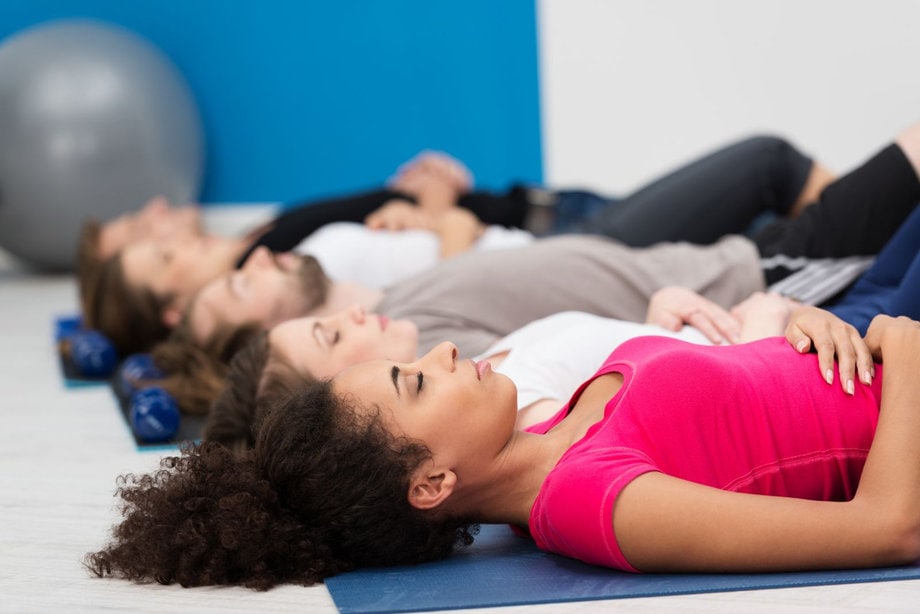Can Breathing Exercises Enhance Sleep and Relaxation

This article explores the potential benefits of breathing exercises in enhancing sleep and relaxation.
It delves into the scientific basis of these exercises and their effects on sleep quality.
The article also provides guidance on practicing diaphragmatic breathing and introduces various guided breathing exercises for relaxation.
Furthermore, it discusses breath control techniques that can contribute to improved sleep.
Lastly, the article offers suggestions on incorporating breathing exercises into one’s bedtime routine.
Through an objective and impersonal approach, this article aims to present evidence-based information on the topic.
Key Takeaways
- Breathing exercises promote relaxation and better sleep.
- Deep breathing techniques improve sleep quality.
- Guided breathing exercises reduce stress levels and enhance sleep quality.
- Specific breath control techniques activate the body’s relaxation response and promote calmness.
The Science Behind Breathing Exercises
The current scientific research supports the potential benefits of breathing exercises in promoting sleep and relaxation.
Breathing techniques for anxiety have been found to be effective in reducing symptoms of stress and promoting a sense of calm.
One study conducted by Jerath et al. (2015) explored the impact of various breathing patterns on stress levels. The findings revealed that slow, deep breathing activates the parasympathetic nervous system, leading to a decrease in heart rate and blood pressure. This physiological response induces relaxation and helps individuals to fall asleep faster and experience higher quality sleep.
Moreover, research conducted by Zaccaro et al. (2018) found that breathing exercises can reduce anxiety levels by increasing the production of gamma-aminobutyric acid (GABA), a neurotransmitter that promotes relaxation and reduces anxiety.
Overall, scientific evidence suggests that breathing exercises can be a valuable tool in promoting sleep and relaxation by reducing stress and anxiety levels.
Benefits of Deep Breathing for Sleep
One potential advantage of incorporating deep breathing techniques into one’s routine is the potential positive impact on the quality of sleep experienced. Deep breathing techniques involve slow, deep inhalation and exhalation, which can help activate the body’s relaxation response and promote a state of calmness.
By engaging in deep breathing exercises before bedtime, individuals may be able to reduce anxiety and stress levels, leading to improved sleep quality. Research has shown that deep breathing can help regulate the autonomic nervous system, increase parasympathetic activity, and decrease sympathetic activity, all of which contribute to a more relaxed state conducive to sleep.
Additionally, deep breathing exercises can help individuals focus their attention on their breath, diverting their minds from intrusive thoughts and worries that often disrupt sleep.
Overall, incorporating deep breathing techniques into one’s routine may offer potential benefits for improving sleep quality.
How to Practice Diaphragmatic Breathing
To effectively practice diaphragmatic breathing, it is important to first find a comfortable and quiet place to sit or lie down.
Diaphragmatic breathing, also known as deep belly breathing, is a technique that involves engaging the diaphragm muscle to take slow, deep breaths. By focusing on breathing deeply and fully, diaphragmatic breathing can provide several benefits, including improved sleep and relaxation.
To begin diaphragmatic breathing, place one hand on your abdomen and the other on your chest. Take a slow breath in through your nose, allowing your abdomen to rise while keeping your chest still. Exhale slowly through your mouth, feeling your abdomen fall. Repeat this process, gradually increasing the length of your inhales and exhales.
This practice can help calm the nervous system and promote a more restful sleep.
Guided Breathing Exercises for Relaxation
This discussion will focus on the benefits of guided breathing exercises and techniques for deep relaxation.
Guided breathing exercises have been found to offer various benefits, including stress reduction, improved sleep quality, and enhanced overall well-being.
Additionally, incorporating specific techniques for deep relaxation, such as progressive muscle relaxation or visualization, can further enhance the relaxation response and promote a state of calmness and tranquility.
Benefits of Guided Breathing
Guided breathing has been shown to offer benefits such as improved sleep quality and increased relaxation. Guided breathing techniques involve the use of specific breath exercises for stress relief. These techniques aim to regulate and control the breath, promoting a sense of calm and reducing stress levels.
By focusing on the breath and its patterns, guided breathing exercises can help individuals shift their attention away from external stressors and redirect it towards their internal state. This can lead to a decrease in anxiety and an increase in relaxation.
Moreover, guided breathing exercises can also help improve sleep quality by promoting a state of relaxation before bedtime. By incorporating these techniques into a regular practice, individuals may experience better sleep and overall well-being.
Techniques for Deep Relaxation
Deep relaxation can be achieved through the use of various techniques that focus on calming the mind and releasing tension in the body. These relaxation techniques aim to promote a state of tranquility and reduce stress levels.
One such technique is progressive muscle relaxation, which involves systematically tensing and then relaxing different muscle groups in the body. This exercise helps individuals become more aware of their muscle tension and enables them to release it.
Another effective technique is deep breathing exercises, which involve slow, deep inhalation and exhalation. This type of breathing helps activate the body’s relaxation response and can induce a state of calmness.
Additionally, mindfulness meditation techniques can also be utilized to enhance relaxation. These techniques involve focusing one’s attention on the present moment and cultivating a non-judgmental awareness.
Overall, incorporating these relaxation techniques into one’s routine can have a profound effect on promoting deep relaxation and improving sleep quality.
Breath Control Techniques for Better Sleep
This discussion focuses on the subtopic of breath techniques for relaxation, improving sleep through breath, and the benefits of controlled breathing.
Breath techniques have long been used as a means to induce relaxation and promote better sleep. By employing specific breathing patterns and exercises, individuals may experience reduced stress levels, improved sleep quality, and enhanced overall well-being.
The benefits of controlled breathing extend beyond relaxation and sleep, with research suggesting positive effects on cognitive functioning, cardiovascular health, and emotional regulation.
Breath Techniques for Relaxation
One effective technique for inducing relaxation is utilizing specific breath techniques. Breathing techniques have long been used as a method to reduce stress and anxiety. Research has shown that intentional deep breathing can activate the body’s relaxation response, leading to a decrease in heart rate and blood pressure.
Here are three key points to consider in relation to breathing techniques for stress relief and the connection between breath and anxiety:
- Diaphragmatic breathing: This technique involves deepening and slowing down the breath by engaging the diaphragm. It can help activate the body’s relaxation response and promote a sense of calm.
- Box breathing: This technique involves inhaling for a count of four, holding the breath for a count of four, exhaling for a count of four, and then holding the breath again for a count of four. This pattern can help regulate the breath and promote relaxation.
- Alternate nostril breathing: This technique involves inhaling through one nostril, closing it off, and exhaling through the other nostril. It can help balance the energy in the body and promote a state of relaxation.
Improving Sleep Through Breath
The previous subtopic discussed breath techniques for relaxation. Now, we will explore how breathing exercises can improve sleep quality and reduce stress. Sleep is essential for overall well-being, and poor sleep quality can have negative effects on physical and mental health. Breathing exercises can help relax the body and mind, promoting better sleep. By engaging in deep, slow breathing, individuals can activate the body’s relaxation response, which counteracts the effects of stress. This can lead to decreased levels of stress hormones and a calmer state of mind conducive to falling asleep and staying asleep. Additionally, incorporating breathwork into a bedtime routine can help create a sense of ritual and signal to the body that it is time to relax and prepare for sleep.
| Improving Sleep Quality | Reducing Stress |
|---|---|
| Promotes relaxation | Decreases stress hormones |
| Induces sleep | Calms the mind |
| Establishes bedtime routine | Signals relaxation and sleep |
Benefits of Controlled Breathing
Controlled breathing techniques have been shown to have various benefits, such as reducing stress levels, promoting better sleep, and establishing a bedtime routine. These techniques involve consciously regulating the breath by focusing on inhaling and exhaling patterns.
The benefits of controlled breathing can be attributed to its ability to activate the body’s relaxation response, which counteracts the effects of stress. Specifically, controlled breathing techniques for stress relief can:
- Lower cortisol levels: Deep, slow breathing stimulates the parasympathetic nervous system, leading to a decrease in cortisol levels, a hormone associated with stress.
- Improve sleep quality: By inducing a state of relaxation, controlled breathing can help individuals fall asleep faster and experience more restful sleep.
- Enhance emotional well-being: Regular practice of controlled breathing can lead to improved mood and reduced anxiety levels, contributing to overall emotional well-being.
Incorporating controlled breathing techniques into daily routines can be a simple and effective way to manage stress, improve sleep, and enhance overall well-being.
Incorporating Breathing Exercises Into Your Bedtime Routine
Incorporating breathing exercises into a bedtime routine can potentially enhance sleep and relaxation. Breathing exercises have been shown to improve sleep quality by reducing anxiety and promoting relaxation. These techniques can help calm the mind and body, making it easier to fall asleep and stay asleep throughout the night. By focusing on deep, slow breaths, individuals can activate the body’s relaxation response, leading to a state of increased tranquility. Additionally, incorporating relaxation techniques such as progressive muscle relaxation or guided imagery alongside breathing exercises can further enhance the relaxation process. Table 1 provides an overview of various breathing exercises that can be incorporated into a bedtime routine. It is important to note that the effectiveness of these techniques may vary between individuals, and it is recommended to practice them consistently to experience their full benefits.
| Breathing Exercise | Technique | Benefits |
|---|---|---|
| Diaphragmatic Breathing | Inhale deeply through the nose, expanding the abdomen. Exhale slowly through the mouth, contracting the abdomen. | – Promotes deep relaxation |
- Reduces stress and anxiety
- Enhances sleep quality |
| 4-7-8 Breathing | Inhale through the nose for 4 seconds. Hold the breath for 7 seconds. Exhale through the mouth for 8 seconds. | – Calms the mind and body - Induces a state of relaxation
- Improves sleep duration |
| Box Breathing | Inhale slowly through the nose for 4 seconds. Hold the breath for 4 seconds. Exhale slowly through the nose for 4 seconds. Hold the breath for 4 seconds. | – Reduces stress and tension - Enhances mental clarity
- Promotes better sleep |
Table 1: Breathing exercises to incorporate into a bedtime routine.
Frequently Asked Questions
How Long Does It Take for Breathing Exercises to Start Improving Sleep and Relaxation?
The duration required for breathing exercises to yield improvements in sleep and relaxation varies. It is essential to consider potential side effects and individual differences when assessing the time frame for observing results.
Are There Any Potential Side Effects or Risks Associated With Practicing Breathing Exercises for Sleep and Relaxation?
Potential risks and safety precautions should be considered when practicing breathing exercises for sleep and relaxation. It is important to be aware of any possible side effects and to take necessary precautions to ensure safety during practice.
Can Breathing Exercises Be Used as a Standalone Treatment for Sleep Disorders?
Breathing exercises have been studied for their efficacy in sleep disorder treatment. However, their use as a standalone treatment requires further investigation. Additionally, the role of breathing exercises within a comprehensive approach to sleep disorder treatment should be explored.
Can Children and Older Adults Benefit From Practicing Breathing Exercises for Sleep and Relaxation?
The effectiveness and considerations of breathing exercises for sleep and relaxation in children and older adults, as well as the role of these exercises in improving sleep quality and reducing stress in different age groups, are topics of interest.
Are There Any Specific Breathing Exercises That Are More Effective for Improving Sleep Quality Compared to Others?
Different breathing techniques have varying effects on sleep quality. Regular breathing exercises can positively impact sleep and relaxation. However, further research is needed to determine which specific techniques are most effective for improving sleep quality.









